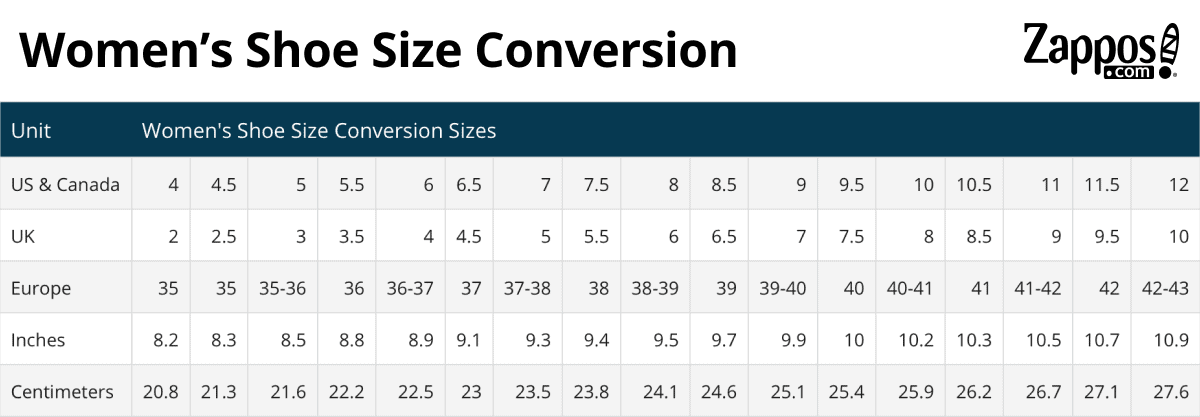A Handy Guide to Shoe Size Conversion for Doting Parents
Welcome to the go-to manual for all the twinkling toes in your family! As parents, watching your little ones grow up is a wonderful journey, but keeping up with their ever-changing shoe sizes can be quite the odyssey. Fret not! Our comprehensive guide is here to sweep away the confusion surrounding shoe size conversion and help you transform this challenging task into a walk in the park. ?
Understanding the Basics of Shoe Size Conversion
Before we leap into the nitty-gritty of conversion charts and measuring techniques, let’s get cosy with the ABCs of shoe sizing. Shoe sizes can vary not just by age or brand but also by geographical region. A size 8 in the US might not be the same as a size 8 in the UK or EU – it’s like a shoe size tower of Babel!
But don’t worry! We’re here to be your shoe size Rosetta Stone. Let’s decode the different systems used across the globe:
- The US system for children’s shoes starts with a small number for the wee little ones and gets larger as kids grow. It also often includes a designation for gender.
- The UK system is quite similar to the US, but starts with a different number and sometimes uses half sizes for a more precise fit.
- The European system (EU) measures the size in Paris Points, which equates to two-thirds of a centimeter, and usually covers a wider range of sizes.
- Japan, Australia, and a few other countries have their unique sizing charts which we’ll also touch upon.
Measuring Little Feet for Big Adventures
The perfect starting point in your shoe size conversion quest is to accurately measure your child’s feet. Here are some easy foot-measuring tips that you can follow:
- Make sure your child is standing up straight on a flat surface. Weight distribution changes when sitting vs standing and can affect the size.
- Place a piece of paper on the ground and gently press down on their foot to get an accurate outline or measurement.
- Using a ruler, measure the distance from the heel to the tip of the longest toe – this is the foot length.
- Consider width as well for those chubby or slim feet. A well-fitting shoe in length might be too tight or too loose width-wise.
Remember, always measure both feet! It’s not uncommon for kids (and adults, too!) to have one foot slightly larger than the other. Use the larger measurement when selecting sizes to ensure ultimate comfort for your tyke’s tootsies. ?
Now, Let’s Get Converting!
You’ve measured, you’ve noted, and now you’re ready to convert! Understanding the conversion between US, UK, and EU sizes is crucial, especially when you’re shopping online or buying international brands. A little math can save you from the hassle of returns and exchanges—because who has time for that, right?
Here’s a peep at how conversion typically pans out: a US size 2 might be a UK size 1.5 and an EU size 33. Not so straightforward, but hang in there! Our upcoming sections will provide detailed charts and a sprinkle of wisdom to help you master this art.
As we dive deeper, we’ll look at specific age ranges, compare the size chart differences, explain how to deal with half sizes, and share our top tips for making sure those little sneakers and sandals are the right fit every time. Get ready to become a shoe size savant for the sake of your little one’s happy feet!

5 Essential Tips for Parents on Shoe Size Conversion
Hey there, super parents! ? Does shoe shopping for your little munchkins feel like solving a complex puzzle? Worry not! Equipped with our top 5 tips, you’ll be the king or queen of shoe size conversion in no time. Let’s get those perfect pairs sorted, ensuring those active feet stay comfy and cozy on every new adventure!
Tip 1: Familiarize with Size Chart Variations
Size charts are like fingerprints—each one is unique. Don’t assume a size that fits in one brand will fit in another. From US to European to UK sizes, every chart tells a different story. Dive into brand-specific size charts to decode the perfect fit for your child!
Tip 2: Keep Up with Growth Spurts
Kids grow faster than the speed of light, or at least it seems that way when their toes are suddenly pushing at the front of their shoes! Measure your child’s feet every few months, as a growth spurt can mean a whole size jump!
Tip 3: One Size Does Not Fit All
Some children have wide feet, some have narrow ones, and others are somewhere in between. Remember, width matters as much as length. Trace those little feet or use a width measuring device to find the perfect fit. Say hello to comfort and goodbye to blisters!
Tip 4: The Online Shopping Hack
When delving into the world of online shopping, arm yourself with knowledge! Read reviews for sizing tips from other parents, look out for printable sizing tools, and choose retailers with customer-friendly return policies just in case those cutesy shoes don’t quite hit the mark.
Tip 5: Always Round Up!
If you’re stuck between sizes, always round up. Why squish those playful toes? Kids won’t be bothered by a little extra room, and it buys you time before the next growth spurt. Bigger can be better when we’re talking about your little one’s rapid growth!
Now that we’ve boosted your shoe size confidence with these helpful tips, let’s jump feet-first into the specifics of converting sizes like a pro. We’ll provide a treasure trove of comparison charts and detailed insights into navigating size conversions across various international standards. Stay tuned and ready to conquer the world of children’s footwear, one happy little step at a time!
